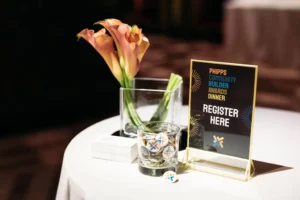In the dynamic landscape of nonprofit organizations (NFPs), staying informed about hiring, compensation, succession planning, and employee retention trends is crucial for attracting, developing, and retaining top talent.
RECRUITMENT TRENDS IN NONPROFITS:
As nonprofits evolve, so do their approaches to recruitment. Several trends are shaping the hiring landscape for NFPs:
STRATEGIC TALENT ACQUISITION:
Nonprofits are adopting a strategic approach to talent acquisition, aligning recruitment efforts with organizational goals and culture to ensure that new hires contribute to the overall mission and objectives.
EMPHASIS ON DIVERSITY, EQUITY, AND INCLUSION (DEI):
DEI considerations are at the forefront of nonprofit hiring practices, with organizations actively working to create more diverse and inclusive teams, to foster broader perspectives and better represent the communities they serve.
REMOTE WORK AND FLEXIBILITY:
The COVID-19 pandemic has accelerated the acceptance of remote work. Nonprofits are embracing flexible work arrangements, enabling them to access a broader talent pool and provide employees with greater work-life balance.
SKILLS-BASED HIRING:
Nonprofits are focusing on skills-based hiring, looking beyond traditional qualifications to identify candidates for a particular role but also identifying skills that are transferrable to other positions.
TECHNOLOGY ADOPTION IN RECRUITMENT:
The use of technology, including applicant tracking systems and artificial intelligence, is becoming more prevalent in nonprofit recruitment processes, streamlining workflows and saving time and resources.
COMPENSATION TRENDS FOR 2024:
Compensation is a critical factor in attracting and retaining top talent in the nonprofit sector. Key trends in compensation for 2024 include:
COMPETITIVE SALARIES FOR MISSION-CRITICAL ROLES:
Nonprofits are recognizing the importance of offering competitive salaries for roles critical to the organization’s mission to attract and retain high-caliber professionals.
FOCUS ON TOTAL REWARDS:
Beyond base salaries, nonprofits are placing greater emphasis on total rewards packages, including benefits, professional development opportunities, and work-life balance initiatives. In recognizing the diverse needs of their workforce, they are being more creative and flexible with offerings.
VARIABLE COMPENSATION AND PERFORMANCE-BASED INCENTIVES:
To align employee performance with organizational objectives, nonprofits are incorporating variable compensation and performance-based incentives.
TRANSPARENT COMPENSATION PRACTICES:
Nonprofits are adopting pay transparent practices, driven by legislation related to job postings, and an internal shift to provide employees with a clear understanding of how their compensation is determined; this helps to foster trust and enhance overall employee satisfaction.
SUCCESSION PLANNING:
Succession planning is a critical aspect of organizational sustainability for nonprofits. Key considerations include:
IDENTIFYING KEY ROLES:
Nonprofits should identify key leadership and critical roles within the organization that are essential for its continued success.
DEVELOPING INTERNAL TALENT:
Fostering the development of internal talent ensures that there is a pool of skilled individuals ready to step into key roles when needed. This may involve mentorship programs, training, and leadership development initiatives. Research shows that an employer’s commitment to developing talent is one of the key reasons employees stay.
CREATING LEADERSHIP PIPELINES:
Establishing leadership pipelines ensures a smooth transition when key leaders or executives retire or move on. Developing a pipeline of talent minimizes disruptions and maintains organizational continuity.
KNOWLEDGE TRANSFER:
Facilitating the transfer of knowledge from senior staff to emerging leaders is crucial for preserving institutional wisdom. This can involve mentorship programs, documentation of processes, and collaborative projects.
ENGAGING THE BOARD:
The board of directors plays a vital role in succession planning. It is essential to communicate succession plans with the board, involving them in the process and seeking their input.
EMPLOYEE RETENTION STRATEGIES:
Employee retention is paramount for the long-term success of nonprofits. Effective strategies include:
UNDERSTANDING EMPLOYEE NEEDS:
Regularly assess employee needs, expectations, and job satisfaction to identify areas for improvement and implement targeted retention initiatives. Regular check-ins, employee surveys and stay interviews provide valuable insights.
PROFESSIONAL DEVELOPMENT OPPORTUNITIES:
Offer ongoing training and development opportunities to empower employees to grow vertically and horizontally within the organization, contributing to their job satisfaction and loyalty.
RECOGNITION AND REWARDS:
Implement recognition programs to acknowledge and appreciate employees’ contributions. This can include awards, public acknowledgment, and other forms of recognition.
FLEXIBLE WORK ARRANGEMENTS:
Provide flexible work arrangements to accommodate employees’ work-life balance needs, demonstrating a commitment to their well-being.
CLEAR COMMUNICATION:
Foster open and transparent communication to ensure employees feel informed, engaged, and part of the organization’s larger mission.
EMPLOYEE WELL-BEING INITIATIVES:
Prioritize employee well-being by offering wellness programs, mental health support, and initiatives that contribute to a positive and healthy work environment.
COMMUNICATION DIFFERENCES BETWEEN GENERATIONS:
Acknowledge and bridge communication differences between generations in the workplace to foster skill-building and knowledge-sharing.
The success of nonprofits in 2024 and beyond lies in their ability to adapt to changing workforce dynamics, prioritize talent acquisition and retention, and strategically plan for the future. By staying attuned to these trends and embracing a forward-thinking approach, nonprofits can position themselves for sustained impact and growth in fulfilling their missions.

THIS ARTICLE WAS ALSO FEATURED IN OUR 2024 NONPROFIT TRENDS GUIDE. READ THE ARTICLE AND MUCH MORE RELATED CONTENT HERE!

Jill Krumholz
RealHR Solutions





No comment yet, add your voice below!